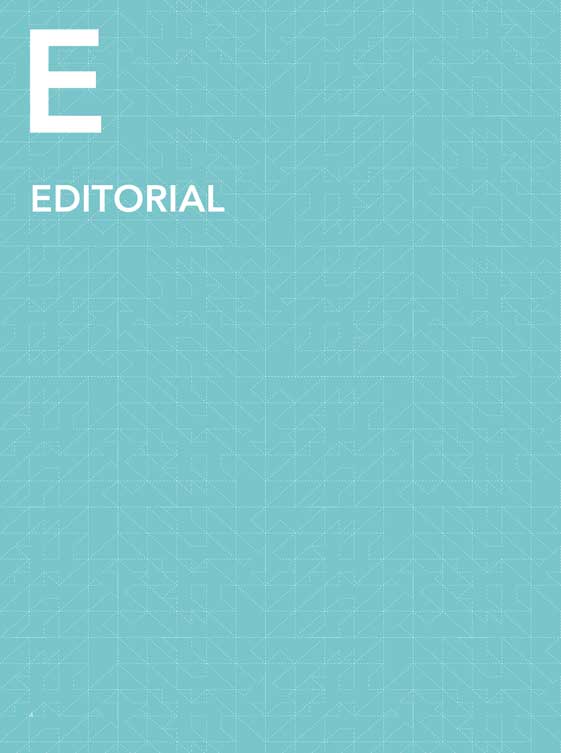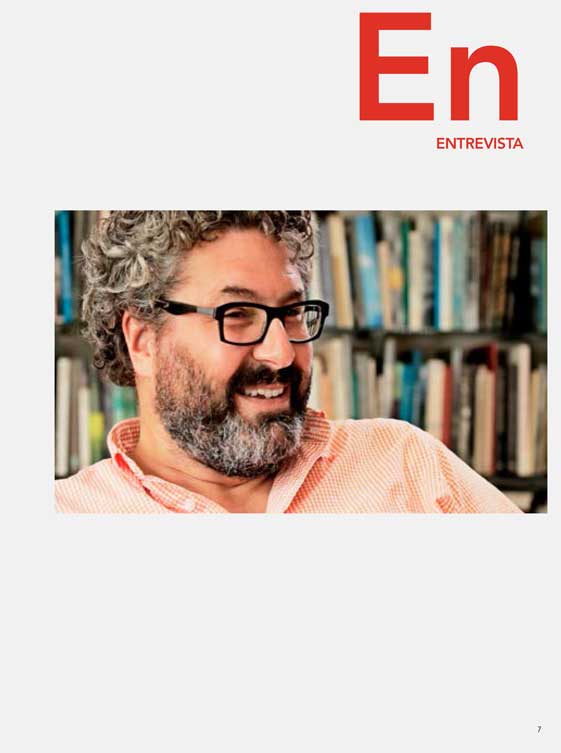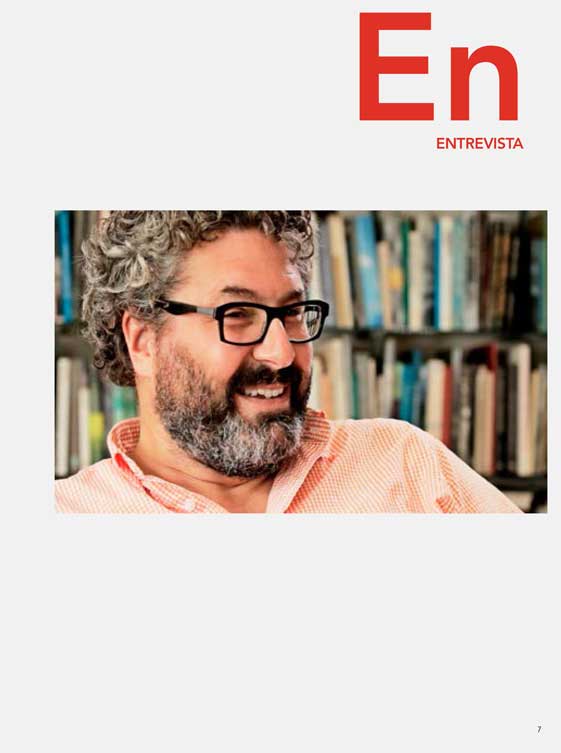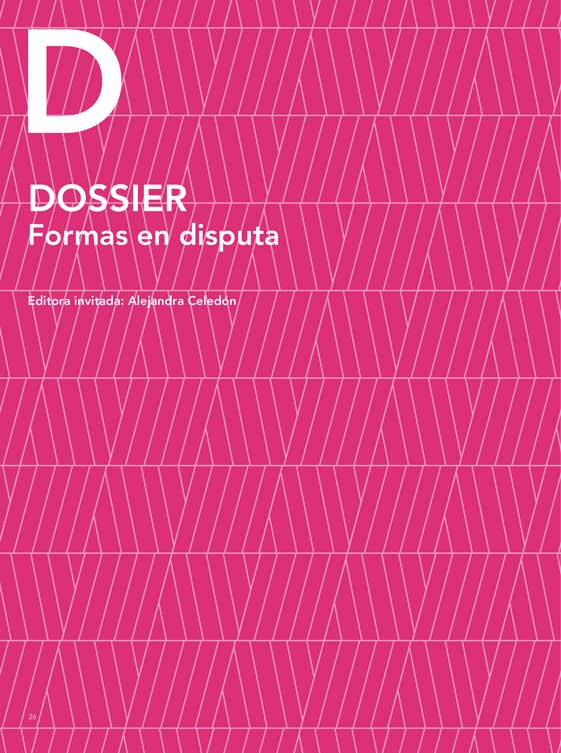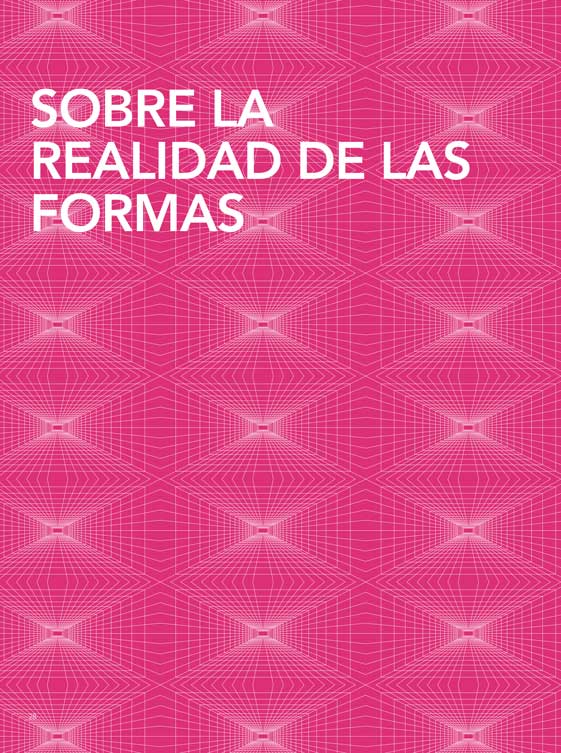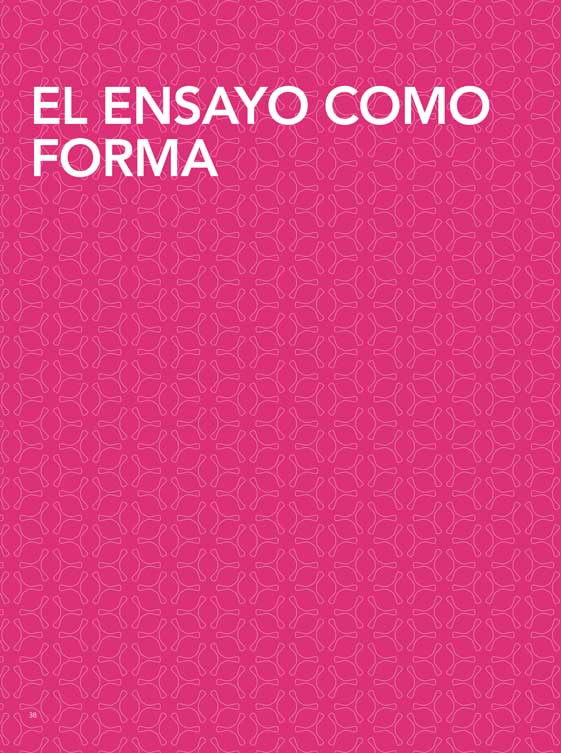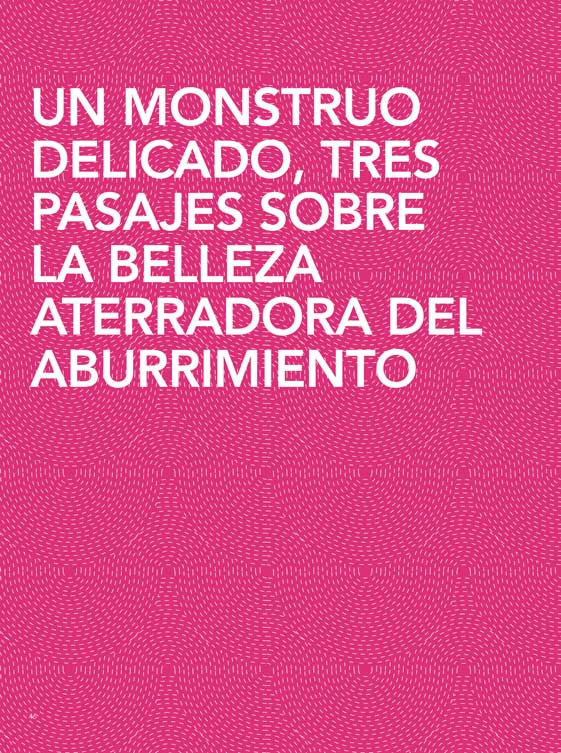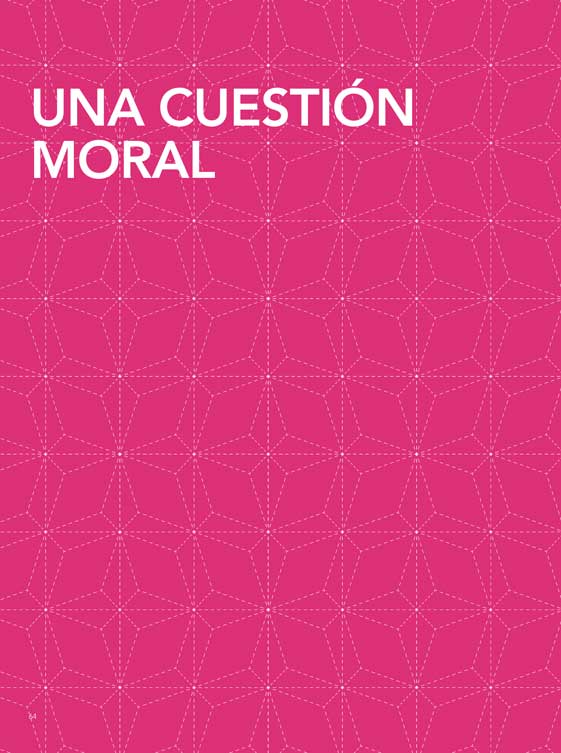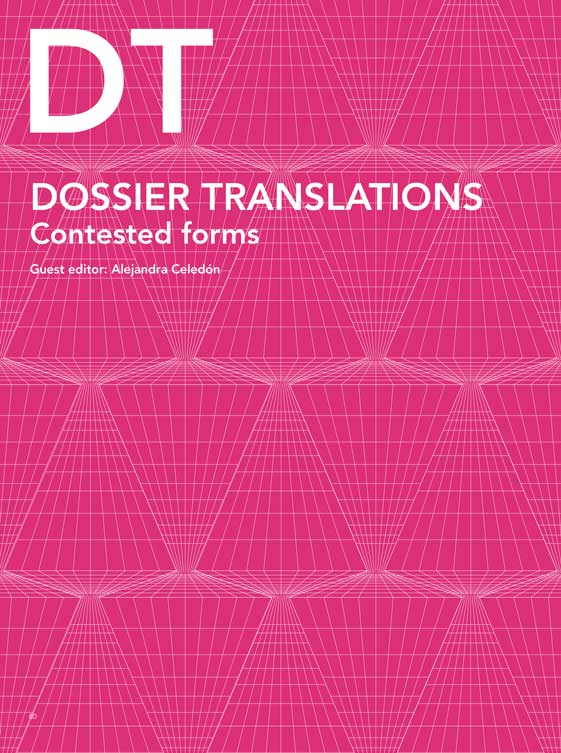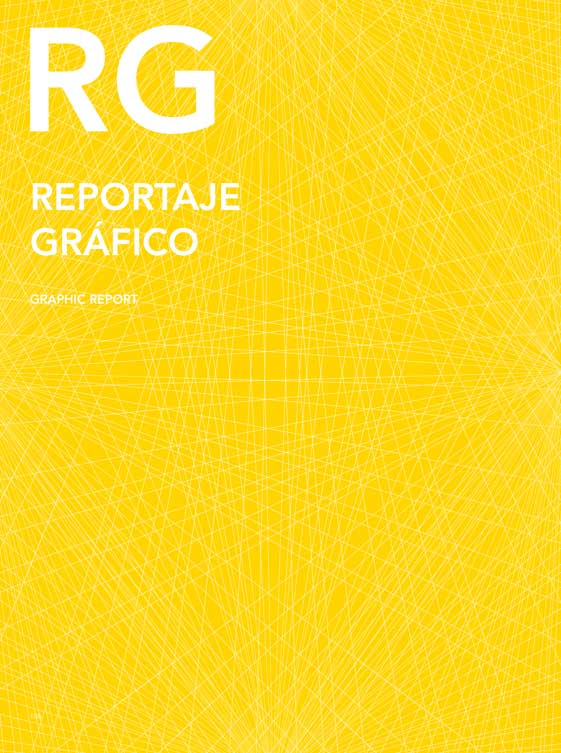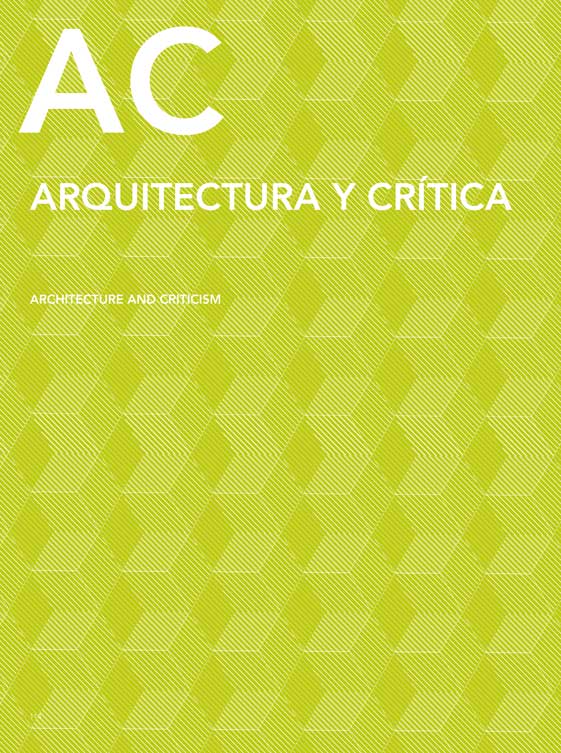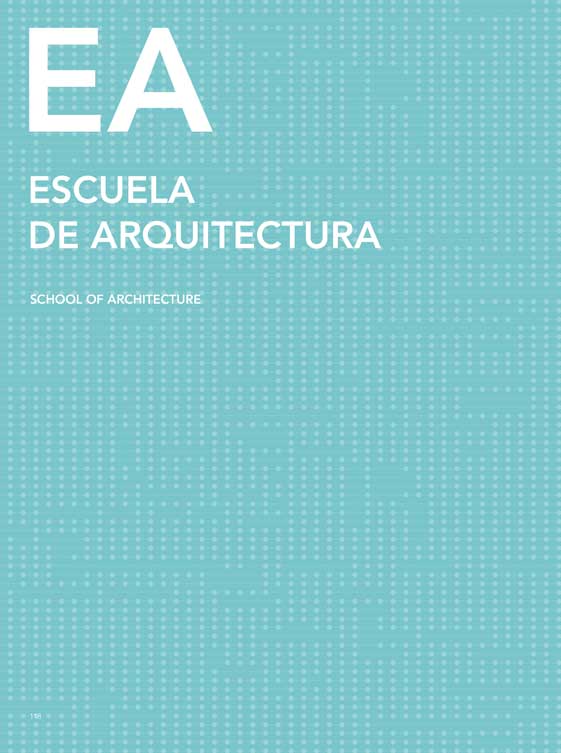
This issue of Materia Arquitectura revolves around the notion of "form". Guest editor Alejandra Celedón opens the issue with an interview with Greg Lynn, in which she discusses the real impact of digital technologies on the material and formal possibilities of buildings in relation to the city. The six essays that make up this dossier question the authority of form. Eeva-Liisa Pelkonen discusses the teaching of form, in particular the ideas and methods of Josef Albers, an artist whose work in series does not point to an absolute final version. Thomas Weaver, for his part, reflects on writing as a possible architectural form, claiming rehearsal - the act of trying and testing - as the site of architectural knowledge. Francesco Marullo, argues that the notion of "life form" would allow us to rethink the concept of "form" as a relationship between forces and possibilities, stressing that repetitive forms are but a sign of the terrible beauty of the twentieth century: boredom. Using Bolles + Wilson's New Luxor Theater as a case study, Gabriela García de Cortázar proposes that the notion of form in architecture contains a paradox: while it systematically rejects the idea of movement in projects, it manifests a central concern for it at the discursive level. Daniel Concha, through a dialogue between Peter Smithson and Ernesto Rogers on the Velasca Tower (1958), addresses a central theme that revolves around architectural form, history, and the city: its morality. Finally, Miguel Paredes uses the geometric operations implicit in the work of Sejima and Nishizawa to question forms that are not based on abstract or idealized geometries, but are "annexed" to them.
Guest Editor Alejandra Celedón
DOI: https://doi.org/10.56255/ma.v0i09
Published: 2014-08-10
